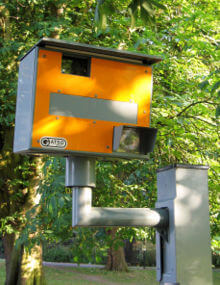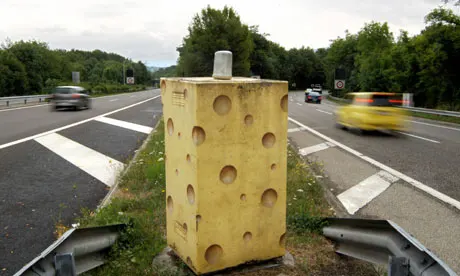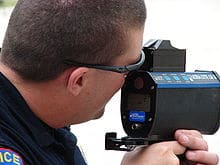In most countries, the population have a love / hate relationship with their police. You can imagine my surprise, therefore, to find myself writing about how they appear to be adopting a customer first strategy in Switzerland!
Let me explain. A few years ago they introduced a new-style speed radars in the villages around my home town. The elements are not that new per se, I know, but last week it suddenly hit me why these speed cameras seem to be so effective. It’s simple; they’re customer centric! The Swiss police have adopted a customer first strategy! And that’s why I want to share more about this story here.
Background

One of the reasons why the Police are disliked in many (dare I say most?) countries, is because of their insidious speed controls.
Whether they are permanent fixtures as on the right, or temporary ones, we all dislike the flash that tells us it’s too late, that we’ve been “caught.”
We then wait a few days, to weeks or even months, naively hoping that it wasn’t our car that was flashed. But eventually the letter arrives asking us to pay a fine.
I think the worst of them all are the laser guns that the Police have been using for many years now. We don’t even know we’ve been flashed until the communication arrives at our home! Or we are pulled up a few hundred meters down the road.

The relatively new types of radar that are being introduced in my home area don’t flash either. But that’s because we never get “caught” as such.
You see they measure our speed and give us immediate feedback. Take a look at the photo on the right; I’m sure you’ve seen such installations before in your own area.
Now if we make the assumption that all four types of equipment are to get road users to decrease their speed in critical areas – and not just to gather money as I’ve heard suggested – then the results must vary widely.
So let me share my thoughts from the perspective of a customer first strategy champion.
What This Has to Do with Your business
So why is this example relevant for you and your own customer first strategy? Well, ask yourself what you really want for your business?
In the case of the police, I am assuming that they want to reduce the speed of drivers in certain areas and make the roads safer for everyone. In this case, the customer-centric approach, which has by far the most success at slowing drivers down to within the speed limit along a larger portion of the road, is the information panel. If that is their objective, then the Police in every country should adopt these new style radars.
But if those who consider speed checks to be a mere money-making operation are right, then the Police will continue to use one of their other options. And they must accept the negative consequences on so many levels, not just on their image or speeding in their localities.
So, take a hard look at your own business actions and ask yourself what you really want for your business? If you are sincerely customer centric, you will stop any practices that you know your customers wouldn’t like.
Half filled packaging – gone. False claims and promises – deleted. Getting credit card details for free trials in the hope customers will forget to cancel and you can automatically charge them for a service that haven’t specifically requested. Not any longer! These all might get you that first sale but you won’t get you happy and loyal customers who become advocates for your brand.
I dedicated a whole post to the ways that companies try to cheat their customers. If you’d like to read it click on this link and see many more ways of cheating the customer that you should avoid: “https://c3centricity.com/how-to-cheat-your-customers/”
If you don’t want to cheat your customers, who would as it is not a viable long-term business model? – then you must objectively evaluate your current practices.
Ask yourself what you want your customers to think and feel about your brand. What are the objectives you have for your business and your customers? What changes in your customers’ attitude or behaviour are you looking to encourage? How does your brand provide a solution to your customers?
These questions are just a small selection we use in our highly successful 7-step insight development process called CATSIGHT™.















